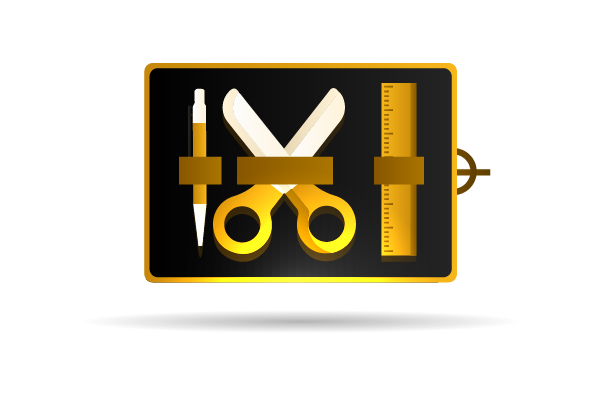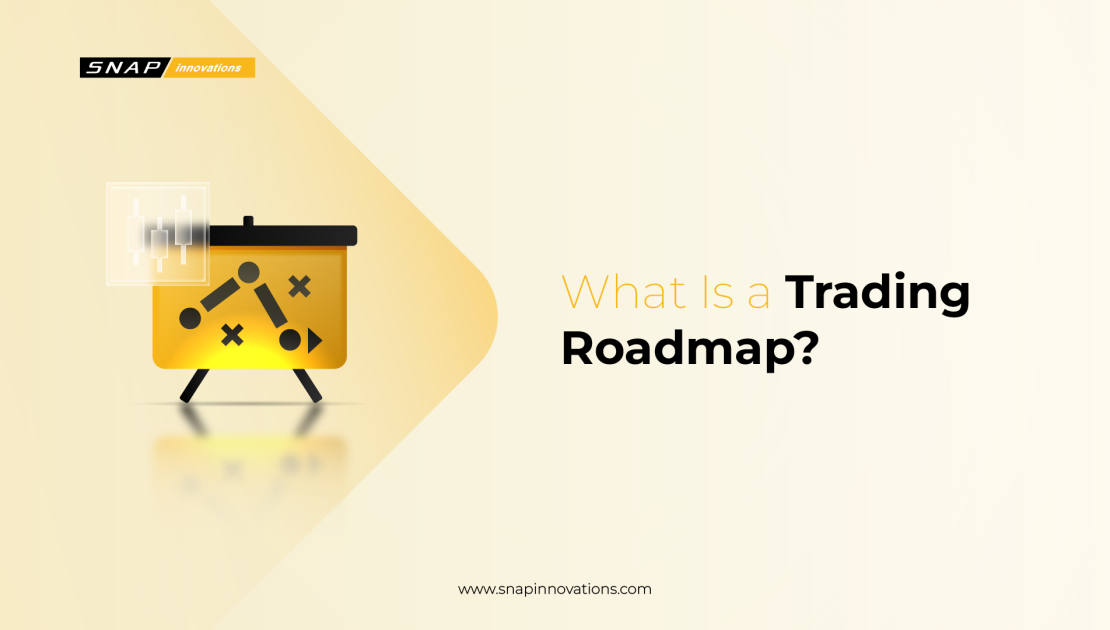Welcome to your definitive guide on crafting a trading roadmap, a crucial tool for any trader aspiring to navigate the complex and often turbulent waters of the financial markets. In today’s trading environment, where volatility is the only constant, having a clear, structured plan can be the difference between success and failure. This article aims to demystify the concept of a trading roadmap, breaking it down into digestible, actionable steps that will guide you through the intricacies of trading, from the foundational principles to the advanced strategies that can help you maximize your potential.
A trading roadmap is not just about the entry and exit points of trades; it’s a comprehensive strategy that includes understanding market trends, risk management, psychological preparedness, and continuous learning. It’s about setting realistic goals and milestones, aligning them with your investment horizon and risk tolerance, and systematically approaching the market with discipline and patience. In this conversational and friendly guide, we’ll explore the critical components of a trading roadmap, offering insights and tips that are applicable to traders of all levels, from novices just starting their journey to seasoned veterans looking to refine their strategies.
Embarking on your trading journey without a roadmap is akin to setting sail without a compass; you might find your way by chance, but the risks are significantly higher. A well-crafted trading roadmap empowers you to make informed decisions, reduces the emotional stress associated with trading, and sets a clear path towards achieving your financial goals. So, let’s dive in and explore how you can develop a trading roadmap that not only enhances your trading experience but also contributes to your overall success in the financial markets.
What is a Trading Roadmap?
In the complex world of financial trading, navigating through volatile markets without a clear strategy can lead to unnecessary risks and missed opportunities. This is where the concept of a trading roadmap comes into play. A trading roadmap is not just a strategy; it’s a comprehensive plan that guides traders through their journey in the financial markets. It’s akin to having a detailed map and a set of instructions when embarking on a long journey. This section aims to unravel the layers of a trading roadmap, shedding light on its significance, components, and the transformative impact it can have on your trading endeavors.
At its essence, a trading roadmap is a strategic blueprint designed by traders to navigate the financial markets more effectively. It encompasses a detailed plan that outlines specific trading goals, strategies, risk management protocols, and criteria for performance evaluation. The roadmap acts as a personal guide, helping traders make informed decisions, stay focused on their objectives, and approach the market with discipline and consistency.
Imagine setting out on a road trip without a map or GPS; the chances of getting lost or veering off course are high. Similarly, entering the trading world without a roadmap can lead to aimless wandering in the market, making decisions based on emotion rather than logic and strategic planning. A trading roadmap helps prevent such pitfalls by providing a structured framework within which traders can operate, making the journey toward financial goals more directed and manageable.
Read More: What Is a Matrix Function?
The Components of a Trading Roadmap
A comprehensive trading roadmap includes several key components: your trading goals, a detailed trading strategy, risk management guidelines, and a plan for ongoing education and adjustment. Your goals should be specific, measurable, achievable, relevant, and time-bound (SMART), providing a clear vision of what you aim to accomplish. The trading strategy part of your roadmap will detail the markets you will trade, the indicators you will use to make trading decisions, and your entry and exit criteria. Risk management is about defining how much risk you’re willing to take on each trade and overall, while the education and adjustment section emphasizes the importance of learning from your experiences and adapting your roadmap as necessary.
The Importance of a Trading Roadmap
Without a trading roadmap, traders often find themselves making impulsive decisions based on emotions rather than logic and strategy. This can lead to inconsistent results and potentially significant losses. A well-designed trading roadmap helps to mitigate these risks by providing a structured approach to trading. It encourages discipline, helps manage emotions, and ensures that you’re always working towards your defined goals. Moreover, by regularly reviewing and updating your trading roadmap, you can adapt to changing market conditions and refine your strategies for continued success.
Crafting Your Trading Roadmap
 Creating a trading roadmap is an art and science, requiring a blend of strategic planning and personal introspection. This segment guides you through the essential steps to craft your personalized trading roadmap. From setting ambitious yet achievable goals to developing a robust trading strategy that resonates with your risk tolerance and investment horizon, we’ll cover the critical milestones in designing a roadmap that’s uniquely yours.
Creating a trading roadmap is an art and science, requiring a blend of strategic planning and personal introspection. This segment guides you through the essential steps to craft your personalized trading roadmap. From setting ambitious yet achievable goals to developing a robust trading strategy that resonates with your risk tolerance and investment horizon, we’ll cover the critical milestones in designing a roadmap that’s uniquely yours.
Step 1: Setting Your Trading Goals
The first step in creating your trading roadmap is to set clear, realistic goals. These should reflect your financial aspirations, taking into account your current financial situation, your investment horizon, and your risk tolerance. Goals can range from achieving a specific return on investment, enhancing your trading skills, or even becoming proficient in a new trading instrument or market.
Step 2: Developing Your Trading Strategy
Once your goals are set, the next step is to develop a trading strategy that aligns with these objectives. This involves selecting the markets you wish to trade, determining the trading style that best suits your lifestyle (e.g., day trading, swing trading, position trading), and identifying the technical indicators or fundamental analysis techniques you’ll use to make trading decisions.
Step 3: Establishing Risk Management Rules
A crucial component of your trading roadmap is your risk management plan. This includes deciding on the amount of capital you are willing to risk on each trade (commonly a percentage of your total trading capital), setting stop-loss orders to limit potential losses, and determining how you will manage trades that don’t go as planned. Effective risk management is essential for preserving your capital and ensuring longevity in the trading world.
Step 4: Continuous Learning and Adjustment
The final step in crafting your trading roadmap involves committing to continuous learning and being open to adjusting your plan as you gain more experience and as market conditions evolve. This could mean refining your trading strategy, adopting new risk management techniques, or setting new goals as you achieve your initial ones. The trading landscape is always changing, and so should your approach to navigating it.
Implementing Your Trading Roadmap
 Implementing your trading roadmap requires a disciplined approach and patience. It’s about sticking to your plan, even when emotions run high, and understanding that not every trade will be a winner. Discipline involves following your entry and exit rules, adhering to your risk management guidelines, and not deviating from your strategy based on fear or greed.
Implementing your trading roadmap requires a disciplined approach and patience. It’s about sticking to your plan, even when emotions run high, and understanding that not every trade will be a winner. Discipline involves following your entry and exit rules, adhering to your risk management guidelines, and not deviating from your strategy based on fear or greed.
A critical aspect of implementation is regularly monitoring and reviewing your trading performance. This involves keeping a trading journal, where you record your trades, the rationale behind them, and their outcomes. Reviewing your trading journal can provide valuable insights into your trading habits, help you identify areas for improvement, and ensure that you’re making progress towards your goals.
As you implement your trading roadmap, you’ll likely encounter situations that challenge your initial assumptions or strategies. This is a natural part of the trading journey and underscores the importance of being flexible and willing to adjust your roadmap. Whether it’s tweaking your risk management rules, exploring new markets, or refining your trading strategy, adjustments are essential for staying aligned with your goals and adapting to the dynamic nature of the financial markets.
Advanced Strategies for Your Trading Roadmap
As you become more comfortable with your trading roadmap, exploring advanced strategies can further enhance your trading acumen. This part of the guide introduces sophisticated tactics, including leveraging technology, understanding market psychology, diversification, and the benefits of networking and mentorship. These strategies aim to refine your trading approach, offering new perspectives and tools for navigating the markets more effectively.
Leveraging Technology
In today’s digital age, technology plays a pivotal role in trading. Leveraging trading platforms, charting software, and automated trading systems can enhance your ability to analyze the markets, execute trades efficiently, and monitor your portfolio. Integrating technology into your trading roadmap can provide a competitive edge, allowing you to make more informed decisions and manage your trades more effectively.
Understanding Market Psychology
A deeper understanding of market psychology can also enrich your trading roadmap. Markets are driven by human emotions, and being able to read the psychological indicators that precede market movements can be a powerful tool. This involves studying patterns of investor behavior, such as fear, greed, and herd mentality, and using this knowledge to anticipate market trends.
Diversification and Portfolio Management
Diversification is a key strategy for managing risk and enhancing the potential for returns. Your trading roadmap should include a plan for diversifying your investments across different markets, asset classes, or trading strategies. This can help spread risk and reduce the impact of any single trade on your overall portfolio.
The Importance of Networking and Mentorship
Finally, building a network of fellow traders and seeking mentorship can be invaluable components of your trading roadmap. Engaging with a community of traders allows you to share insights, learn from others’ experiences, and stay updated on market trends. Mentorship, whether through formal programs or informal relationships, can provide guidance, support, and accountability, helping you navigate the complexities of trading with greater confidence.
Staying Motivated and Managing Emotions
 Trading is as much a psychological endeavor as it is a technical one. Managing your emotions, staying motivated, and dealing with the inevitable ups and downs are crucial for long-term success. Your trading roadmap should include strategies for maintaining a positive mindset, such as setting realistic expectations, focusing on the process rather than the outcomes, and practicing mindfulness or stress-reduction techniques.
Trading is as much a psychological endeavor as it is a technical one. Managing your emotions, staying motivated, and dealing with the inevitable ups and downs are crucial for long-term success. Your trading roadmap should include strategies for maintaining a positive mindset, such as setting realistic expectations, focusing on the process rather than the outcomes, and practicing mindfulness or stress-reduction techniques.
Dealing with losses is an inevitable part of trading. How you respond to these losses can significantly impact your future success. It’s important to view losses as learning opportunities, analyzing what went wrong and how you can improve. Your trading roadmap should emphasize the importance of resilience, encouraging you to bounce back from setbacks with a constructive and forward-looking approach.
Just as it’s important to learn from losses, it’s equally important to celebrate your successes. Acknowledging and celebrating achievements, no matter how small, can boost your confidence, reinforce positive trading behaviors, and keep you motivated. Include in your trading roadmap a plan for celebrating milestones, whether through personal rewards, sharing your successes with your trading community, or simply taking a moment to reflect on how far you’ve come.
Finally, a sustainable trading roadmap recognizes the importance of balance. Balancing trading with other aspects of your life, such as family, hobbies, and personal well-being, is essential for avoiding burnout and maintaining a healthy perspective. Ensure that your trading roadmap includes time for activities outside of trading, fostering a well-rounded and fulfilling life.
Read Next: Open Source Trading Platform: Empowering Financial Markets
Conclusion
Creating and following a trading roadmap is a journey that requires commitment, discipline, and a willingness to learn and adapt. It’s about setting clear goals, developing a strategic plan, managing risks, and continuously refining your approach based on experience and changing market conditions. Remember, the goal of a trading roadmap is not just to achieve financial success but to enhance your overall trading experience, making it more structured, less stressful, and ultimately more rewarding.
As you embark on or continue your trading journey, keep in mind that success in trading doesn’t happen overnight. It’s the result
of consistent effort, a disciplined approach, and the resilience to overcome challenges. Your trading roadmap is your companion in this journey, providing guidance, structure, and a framework for achieving your trading objectives. Embrace the process, stay patient, and remain open to learning and adapting. The road to trading success is a marathon, not a sprint, and with a solid trading roadmap in hand, you’re well-equipped to navigate the path ahead.
Disclaimer: The information provided by Snap Innovations in this article is intended for general informational purposes and does not reflect the company’s opinion. It is not intended as investment advice or recommendations. Readers are strongly advised to conduct their own thorough research and consult with a qualified financial advisor before making any financial decisions.


